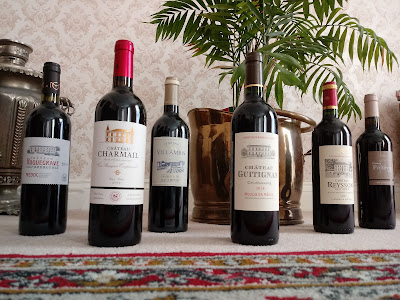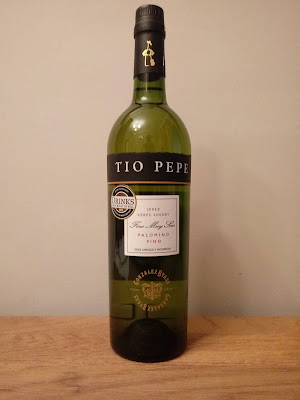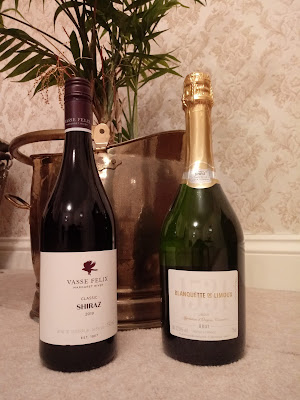With #1 child home from university for Christmas and keen to learn a bit about wine, I suggested that she have some Bordeaux lessons.
Bordeaux, on France's Atlantic coast is one of the great wine regions of the world - but you knew that already, didn't you?
Bordeaux makes wine of all colours, but the reds are where it's at for wine enthusiasts.
Bordeaux is the overall, catch-all appellation; the more specific the sub-appellation, the better the wine - in general.
- Crus Bourgeois is literally the "middle class" of Right Bank Bordeaux wines; at the top end you have the Classed Growths, at the bottom everyone else
- the Right Bank of Bordeaux is the Medoc peninsula where the vines are majority Cabernet Sauvignon; Cab is blackcurranty and tannic, it has aging potential but can need a few years or some time in the decanter to become harmonious in its youth
- tannins are the "chewy", "grippy" feeling of a red wine, akin to stewed tea; drying on their own, they work well with the protein in red meats
- vintage matters in Bordeaux, perhaps more than anywhere else; the wines can range from baked and short-lived in hot years to lean and fresh in cold years
- the greatest years are typically Jancis Robinson's "rule of five": 2000, 2005, 2010, 2015 and 2020. Of recent-ish, non-5 years, 2016 - 2019 was a better run than the (mostly disastrous) 2011 - 2014.
Historically, Bordeaux was unapproachable in its youth and needed many years of aging to soften and become harmonious; when I used to buy wines in France as part of regular driving holidays, I still found that at under three years old, most red wines needed quite a bit of aeration.
At two to three years of age, these wines now all drink well on first pouring with good fruit showing straight away. Yes they improve with aeration and yes you could cellar them, but there is not quite the same need to buy wines to lay down for an extended period before even contemplating opening them up.
This style of earlier-drinking wines may be a more contemporary approach, but it certainly makes sense for everyone that a wine be enjoyably drinkable on release.
The quality of the fruit and wine-making is also very consistent here.
Unusually for a Right Bank wine, this estate has a very high percentage of Merlot vines - over 90%. Merlot is low in tannins, generously fruited and plush.
red and black fruits, complex sous bois and spice; ripe, mouthwatering red and black cherry fruit, dried green herbs, spices and inky graphite; long, supple and harmonious with good, savoury underpinnings
Drinks nicely on first opening but improves with aeration.
Good.
Match the freshness to roast chicken or a plate of salami and cheese.
cherry and bramble fruits, vanilla spice and sous bois; ripe-yet-fresh red and dark berry fruits with spices and graphite; supple and inky with very fine tannins. Long and very well-made.
Drinks nicely on first opening but improves with aeration.
Good.
Château Poitevin 2012, Médoc Cru Bourgeois (£17.95, Lea and Sandeman)
minty-herbaceous with dark bramble fruit, leather and complex oaky spice; fresh and inky with a dense muscular core. Supple with firm, fine tannins.
Still very youthful and primary; will repay cellaring.
Good.
Match with rare roast beef or a steak.
dark fruit and plums; fresh, ripe, juicy dark berry fruits with green herbs; fresh, harmonious and supple
Good.
Match the freshness to lighter game or pate.
Château Roquegrave Médoc, 2018
dark fruit and plums with some forest floor; cherry fruited with spice, oaky vanilla, cigar box, and leather. Fresh and harmonious.
Good.
Match with salamis, pate or pizza.
Château Guitignan, Moulis-en-Médoc, 2018
complex oaky spice, dark berry fruits and leathery undergrowth; ripe dark fruits, savoury black olives and dark green herbs with leathery, mushroomy sous bois; concentrated, supple and inky with rounded, very fine, well-integrated tannins
Will gain further complexity with some cellaring.
Good+.
Match with rosemary-and-garlic lamb.











